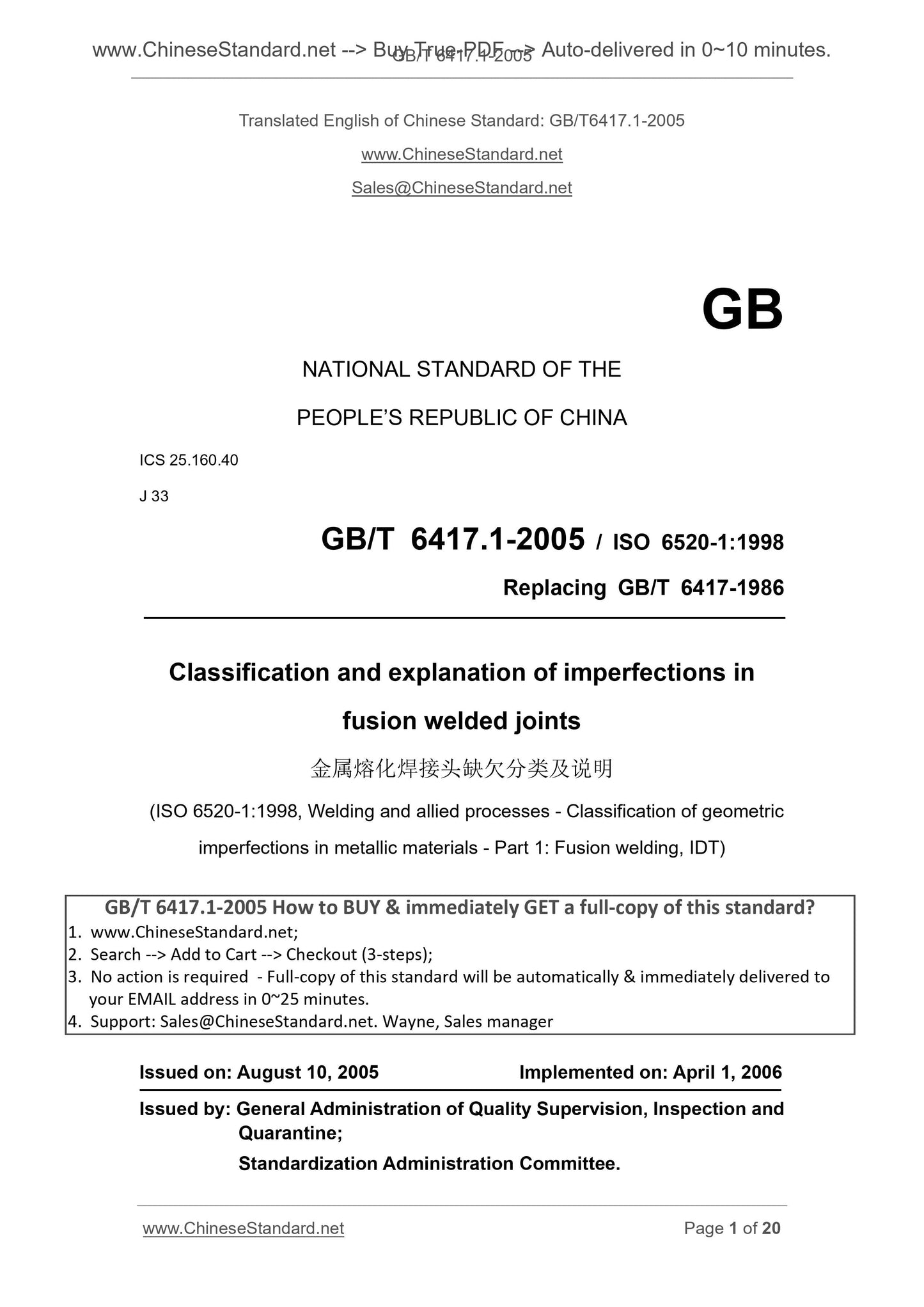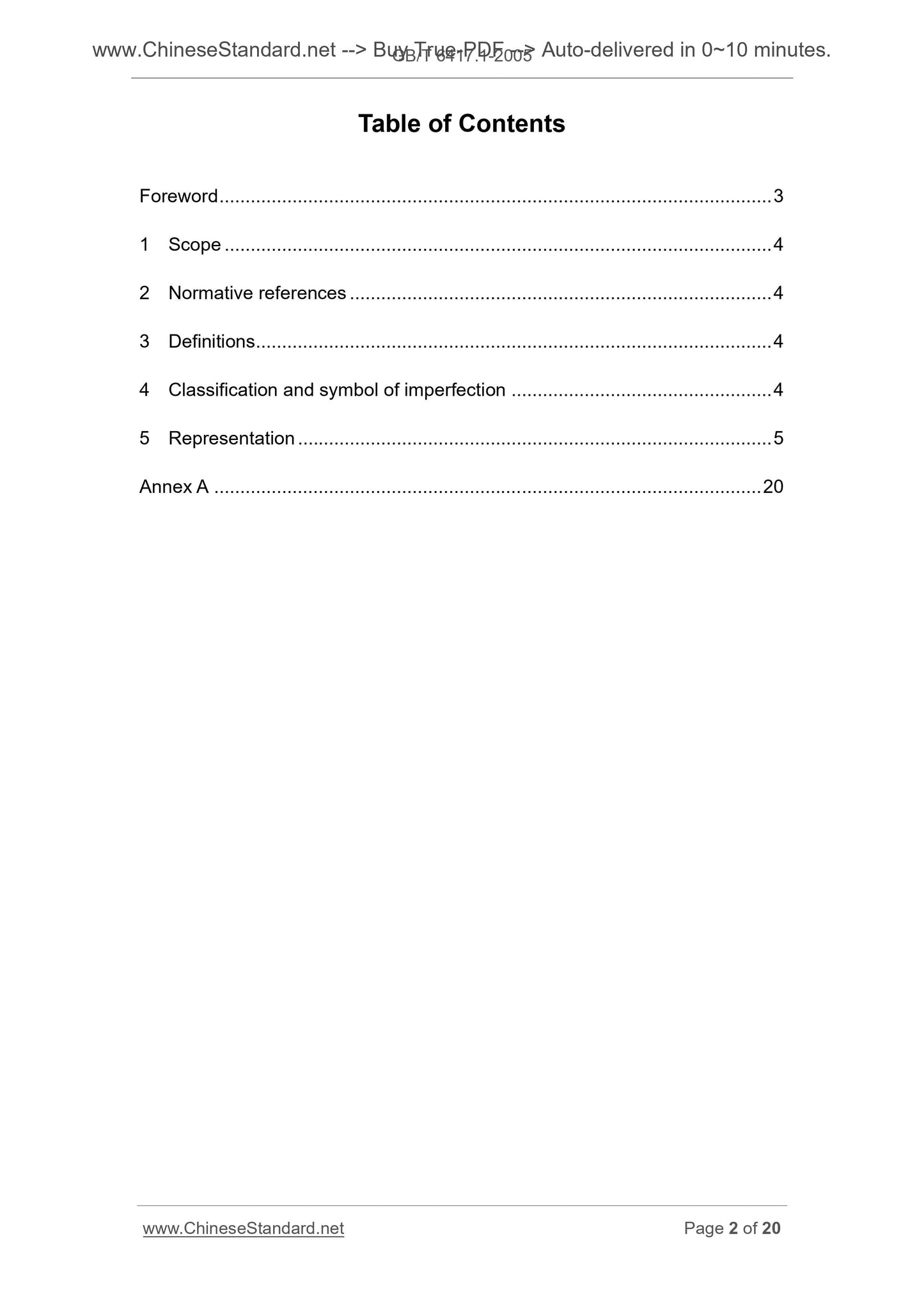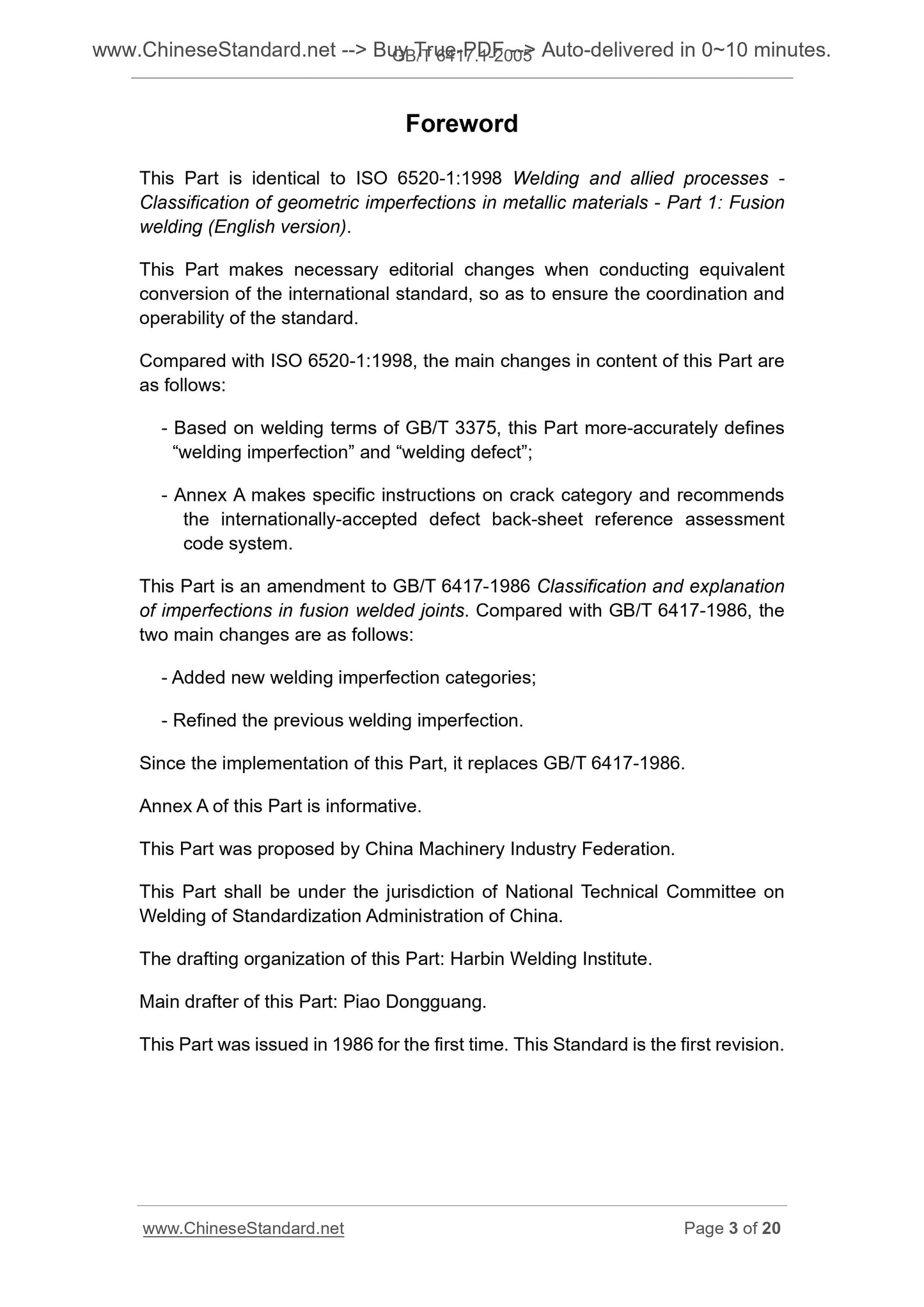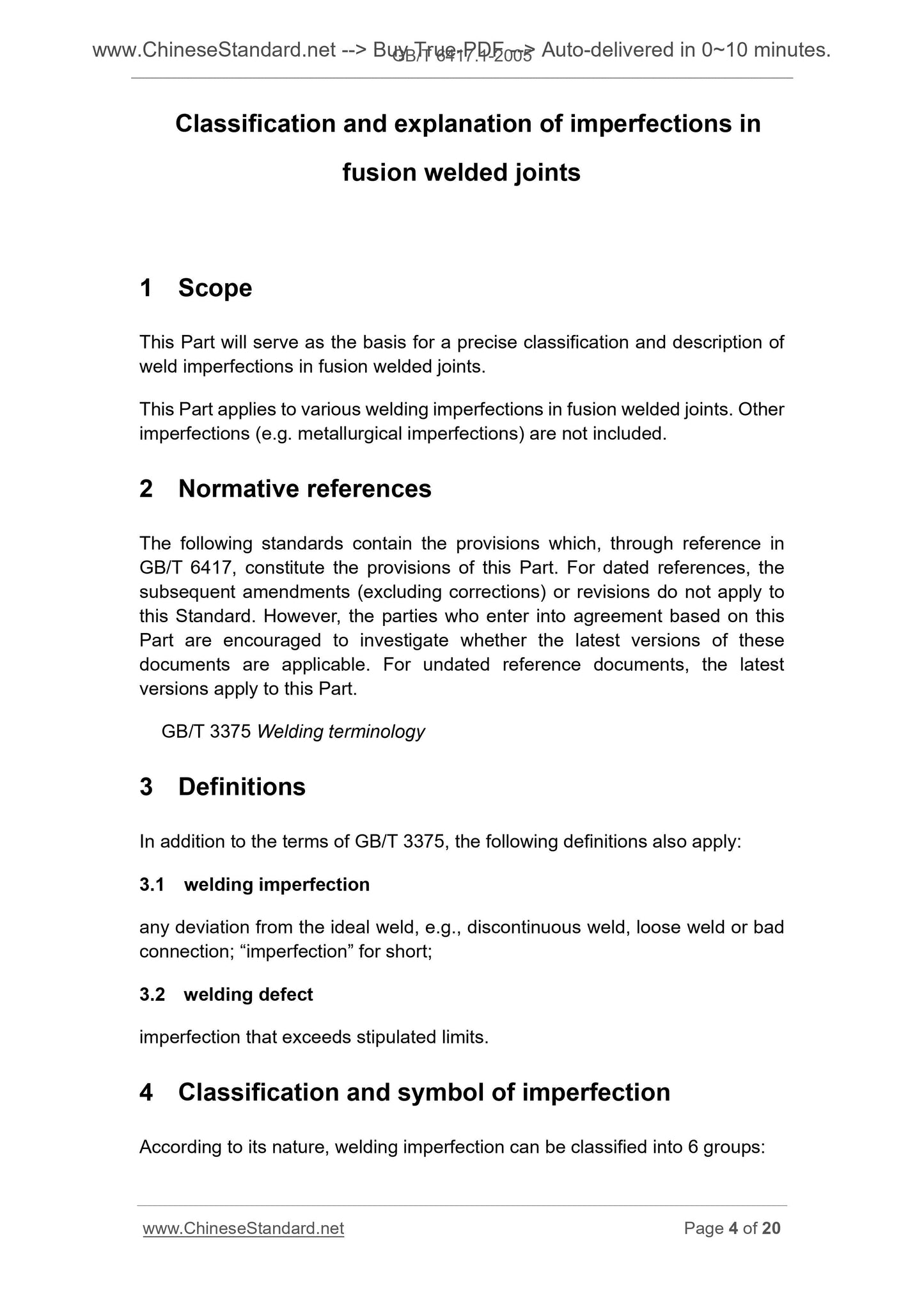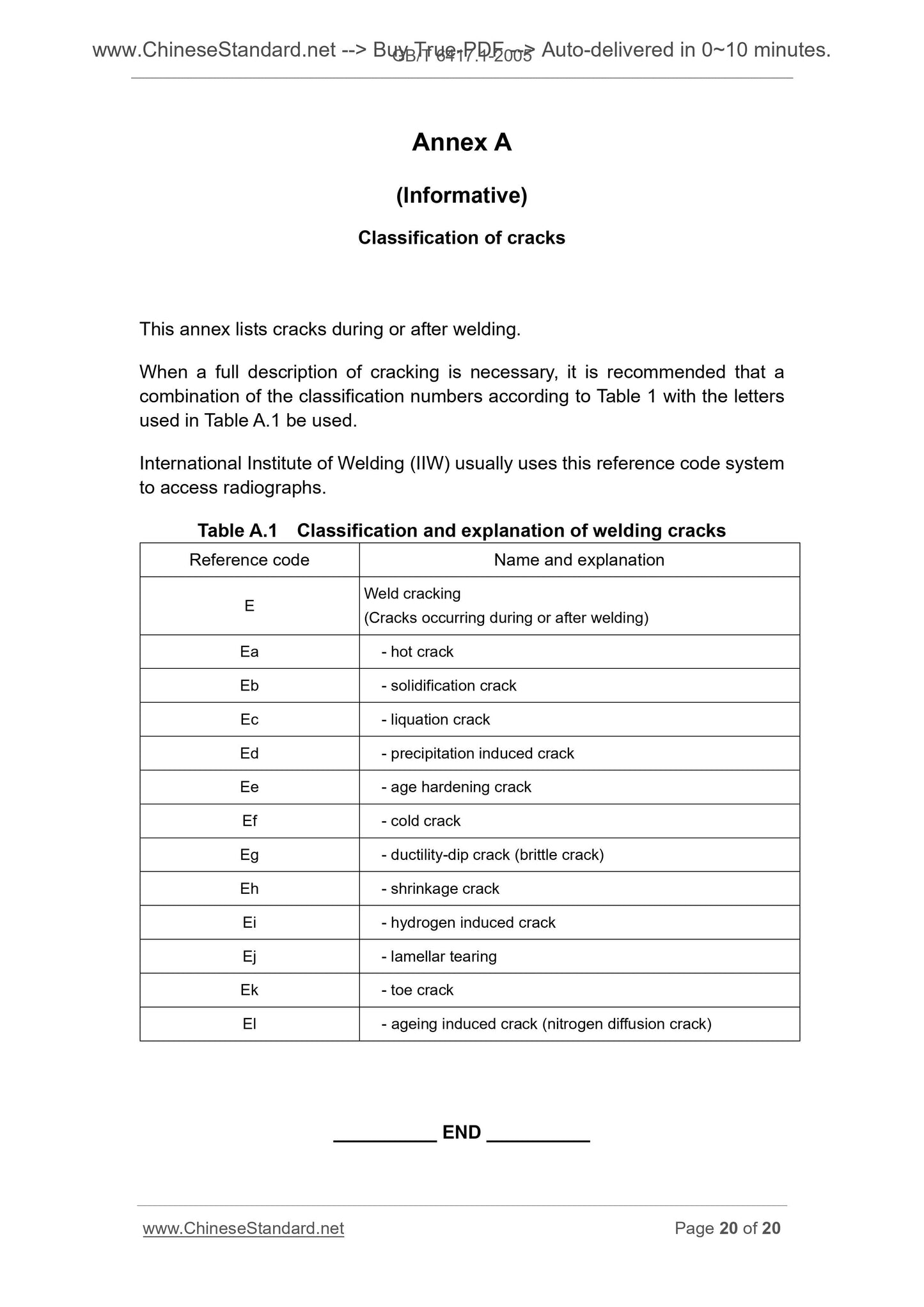1
/
of
5
www.ChineseStandard.us -- Field Test Asia Pte. Ltd.
GB/T 6417.1-2005 English PDF (GB/T6417.1-2005)
GB/T 6417.1-2005 English PDF (GB/T6417.1-2005)
Regular price
$70.00
Regular price
Sale price
$70.00
Unit price
/
per
Shipping calculated at checkout.
Couldn't load pickup availability
GB/T 6417.1-2005: Classification and explanation of imperfections in fusion welded joints
Delivery: 9 seconds. Download (and Email) true-PDF + Invoice.Get Quotation: Click GB/T 6417.1-2005 (Self-service in 1-minute)
Newer / historical versions: GB/T 6417.1-2005
Preview True-PDF
Scope
This Part will serve as the basis for a precise classification and description ofweld imperfections in fusion welded joints.
This Part applies to various welding imperfections in fusion welded joints. Other
imperfections (e.g. metallurgical imperfections) are not included.
Basic Data
| Standard ID | GB/T 6417.1-2005 (GB/T6417.1-2005) |
| Description (Translated English) | Classification and explanation of imperfections in fusion welded joints |
| Sector / Industry | National Standard (Recommended) |
| Classification of Chinese Standard | J33 |
| Classification of International Standard | 25.160.40 |
| Word Count Estimation | 14,188 |
| Date of Issue | 2005-08-10 |
| Date of Implementation | 2006-04-01 |
| Older Standard (superseded by this standard) | GB/T 6417-1986 |
| Adopted Standard | ISO 6520-1-1998; IDT |
| Regulation (derived from) | Announcement of Newly Approved National Standards No. 11 of 2005 (No. 85 overall) |
| Issuing agency(ies) | General Administration of Quality Supervision, Inspection and Quarantine of the People Republic of China, China National Standardization Administration Committee |
| Summary | This standard specifies: fusion welded joints in welding defect classification and description. This standard applies to: welded joints all types of welding defect. This standard does not apply to other imperfections (such as metallurgy shortcomings). |
Share
